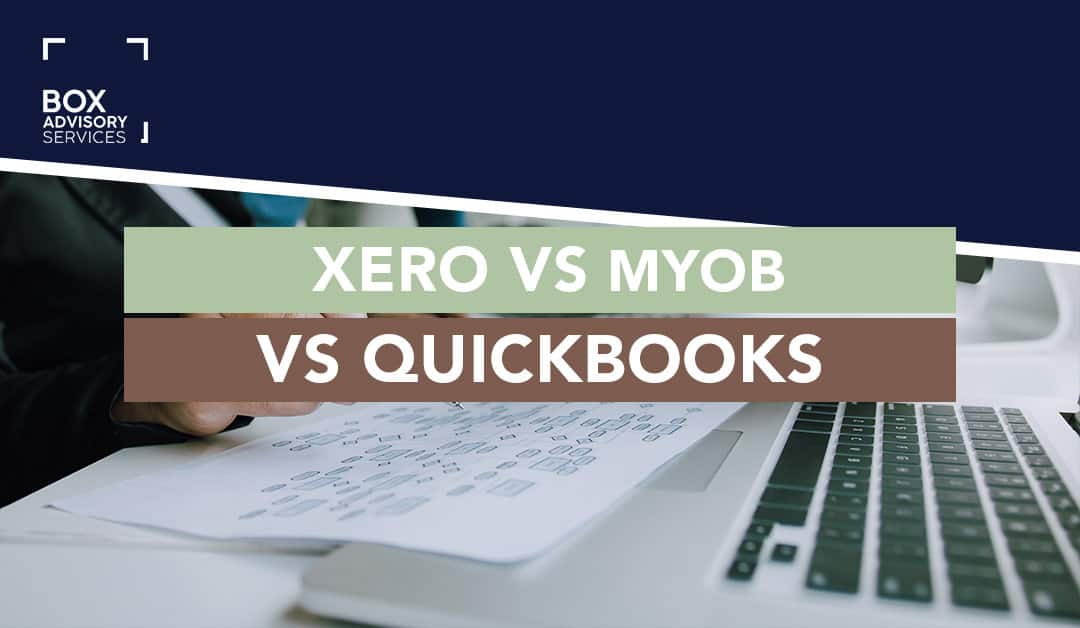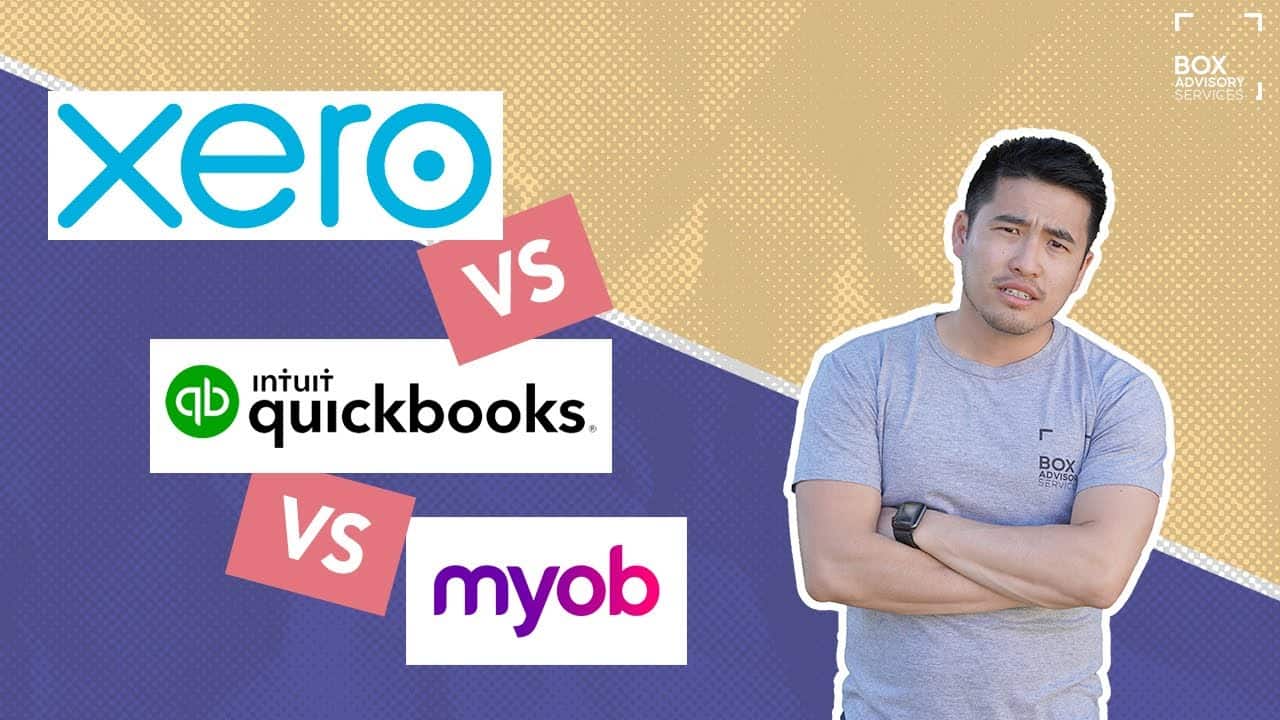
BY
|
MYOB Vs Xero & QuickBooks: The Showdown
Inaccurate payroll and bookkeeping are common issues that many businesses face. From initial employee hiring to day-to-day tasks such as expense management or paying vendors, businesses are always looking for ways to save time by automating their processes.
Though some might think it’s expensive upfront, using the software could be one of your best investments yet!
With so many different accounting software options out there, it can be hard to know which one best suits you and your business. Cloud accounting offers the benefits of accessibility and enhanced security, allowing you to manage your finances from anywhere at any time, streamlining processes and improving efficiency compared to traditional desktop software.
When it comes to MYOB Vs. Xero (and even Quickbooks), they all have their pros and cons.
So, in this article, we’ll break down the differences between three popular accounting software packages.
Xero Accounting Software
Xero has gained significant traction in recent years, and, in my opinion, it’s by far the most user-friendly accounting software of the three. Its cloud accounting capabilities allow users to manage their finances from anywhere at any time, offering enhanced security and streamlining processes compared to traditional desktop software.
Beneficial Features and Inventory Management
Here are a few of the features that set Xero apart from the rest:
- Focus on education: the tool is only as good as the user, so Xero places significant focus on educating its users by providing informative and interesting online training tools and 24/7 online support.
- No jargon: Xero tries to remove most accounting jargon and instead uses simple terms so that business owners without an accounting background can easily understand and do bookkeeping by themselves. For example, instead of “debit” and “credit”, the software uses “spent” and “received”.
- Cloud-based software: Xero is cloud-based, so there’s no need to update the latest version constantly.
- Accessibility: anyone with the authorised login details can access the accounts anytime, as long as they’re in a WiFi zone.
- Mobile app: for those who like having quick access on their phone, there’s a well-developed app that works on iOS and Android.
- Bank accounts: Xero’s ability to connect with bank accounts for automated bank reconciliation streamlines managing accounts payable and receivable.
- Cash flow management: Xero aids in cash flow management by providing real-time visibility of finances, including income, expenses, and profits.
- Multi-currency accounting: Supports global business operations by allowing transactions in multiple currencies.
- Multiple reports: With Xero, users can run and customise several reports simultaneously, offering a distinct advantage over competitors.
- Unlimited user limits: Xero stands out among cloud accounting software options due to its unlimited user limits, making it a favourable choice for businesses that anticipate growth and require more comprehensive features.
Potential Pitfalls
While Xero has some fantastic features, it’s also essential to weigh up the potential pitfalls of the programme – so that you can make the best decision on software that can work for your small business.
For example, Xero has basic inventory tracking software, and it cannot automatically calculate commissions. So, if you want to track your inventory and have multiple payroll structures, Xero might not be the best solution.
However, it’s worth considering that they have a list of software partners that integrate with Xero and solve that problem.
MYOB Accounting Software and Solutions
Unlike Xero, which was only launched in 2006, MYOB has been around since the early nineties, establishing itself as the king of traditional accounting software. However, recognising the benefits of cloud storage and accessibility, MYOB AccountRight subscriptions have evolved to cloud-based plans, enhancing data security and allowing users to access their financial information from anywhere with an internet connection.
In this comparison, we aim to examine Xero and MYOB’s features, pricing, and usability, highlighting the similarities and differences in functionality, cost, usability, bank feeds, data security, and app integrations. MYOB also connects with your bank account to facilitate efficient financial management, including seamless payment processing, reconciliation, and account management.
For example, MYOB business solutions have always been popular among sole traders and small businesses because they can help you perform basic accounting tasks like lodging your BAS statement, tracking all your bills and GST, and issuing invoices straight from the software.
Here are a few benefits and downsides to the software you should consider before signing up.
Key Features and Benefits
- Cloud-based software: Although MYOB is known for its traditional accounting processes, they’ve also realised the importance of keeping up with the times and now offer cloud-based accounting software.
- Single-touch payroll: MYOB comes standard with single-touch payroll, which you can use for one employee. However, an add-on feature allows you to organise your payroll for unlimited employees (something Xero doesn’t offer). Additionally, MYOB’s unlimited user limits benefit businesses that anticipate growth and require more comprehensive features.
- Inventory manager: MYOB helps you manage inventory and track jobs with ease. For example, you can track sales and stock across many locations and record purchases and sales in different currencies.
- Accessibility is similar to Xero; you can access accounting records anywhere, anytime.
- The AccountRight feature allows you to manage different business accounts with one username, which is perfect for running multiple businesses. Of course, MYOB will keep each business separate, but you can prepare business reports for each company without logging in and out of different software.
Downsides of the Software
The biggest problem that most people have with MYOB is that it still operates as a desktop version. Unfortunately, this means you’ll have to upgrade to newer versions of the software each time they’re released.
This can be quite a nuisance because all the users will have to ensure they’ve all updated their software; otherwise, things could get messy.
But they’re new to the cloud technology game, so hopefully, we’ll see some improvement in this aspect.
QuickBooks
QuickBooks has similar features to MYOB because it adopts a more traditional accounting approach.
But there are some differences – so here are a few of the benefits and potential disadvantages of the QuickBooks accounting software.
Software Benefits
- Various product offerings: It has different product offerings for different-sized businesses. For example, SimpleStart would be great for small businesses, while Online Plus is excellent for small to medium-sized businesses. They also offer QuickBooks Self-Employed for sole traders, which is fantastic for people and startups looking for a basic accounting tool.
- Numerous integration features: QuickBooks also offers the most integrations of all the accounting software out there. There are more than 650 integrations, with 25 of those being just payment processing options.
- Inventory management: QuickBooks enables you to input customer and ordering information while maintaining inventory data.
Disadvantages
As with Xero and MYOB, QuickBooks also has a few downsides.
Unfortunately, the software is quite buggy. In other words, it often lags and even hangs if you ask it to do too many things. Slow software is usually the last thing anyone wants to deal with – especially if bookkeeping is not your cup of tea.
They also don’t have the most outstanding reputation regarding customer support – and with significantly fewer training tools, it is not very easy for business owners to navigate the software.
Price Comparison: Xero vs Quickbooks vs MYOB
Xero can range from $35 per month for the starter package to $115 for the premium package, -depending on how many employees you have. The more employees you have, the more expensive the premium package will be. Adding on other features, such as time tracking and rostering, will also come at an additional cost.
MYOB also starts at $34 per month for the starter and can cost you $63 for the premium software. If you prefer to go for the AccountRight software, the Plus plan is $136 per month, and the Premier version is $150 per month. Payroll features come at an additional cost.
Quickbooks comes in at the lowest starter price, at $29 per month for their Simple Start software and $45 to $60 per month for their Essentials and Plus packages. Of course, you’ll have to add on the payroll cost per employee, but it’s the most cost-effective option out of the three.
* Please note, prices are subject to change.
Xero vs. Quickbooks vs. MYOB At a Glance
| Feature/Aspect | Xero | MYOB | QuickBooks |
| Ease of Use | Most user-friendly with plain language and minimal jargon. | Moderate; still transitioning from traditional desktop to cloud-based systems. | Moderate; can be buggy and less intuitive for beginners. |
| Cloud-Based Accessibility | Fully cloud-based; accessible anywhere with WiFi. | Offers cloud-based plans but still relies on desktop software for some features. | Fully cloud-based; accessible anywhere with internet. |
| Mobile App | Well-developed app for iOS and Android. | Accessible through mobile but less robust than Xero’s app. | Mobile app available but not as seamless or user-friendly as Xero’s. |
| Payroll Features | Single-touch payroll for unlimited users (additional cost). | Single-touch payroll included for one employee; add-on available for unlimited employees. | Payroll available but incurs additional costs per employee. |
| Inventory Management | Basic inventory tracking; lacks advanced features like commission calculation. | Strong inventory management with multi-location tracking and multi-currency support. | Includes inventory management but not as advanced as MYOB’s. |
| Integrations | Extensive integrations with third-party apps and software partners. | Moderate integrations; evolving to match competitors. | Most integrations (650+), including 25 payment processing options. |
| Reporting Features | Customisable reports; run multiple reports simultaneously. | Comprehensive reporting for multiple businesses under one account. | Reporting features available but less customisable compared to Xero. |
| Pricing (Starter) | Starts at a competitive monthly fee, with additional costs for advanced features. | Offers entry-level pricing, with costs increasing based on features and business size. | Affordable starter plans, with add-ons for payroll and other advanced tools. |
| Pricing (Premium) | Higher-tier plans available, pricing depends on employee count and added features like time tracking. | Premium plans cater to larger businesses, with options for more advanced tools like AccountRight. | Mid-range premium plans, tailored to small-to-medium businesses with additional costs for payroll. |
| Strengths | – Focus on education and training tools.- Unlimited user limits.- Real-time cash flow visibility.- Excellent customer support.- Global multi-currency support. | – Strong in payroll and inventory management.- Good for multi-business management.- Established reputation as a traditional accounting leader. | – Affordable pricing.- Wide range of integrations.- Suitable for different business sizes with tailored plans. |
| Weaknesses | – Basic inventory tracking.- Cannot calculate commissions automatically.- Higher pricing tiers. | – Relies on desktop software upgrades.- Limited cloud functionality compared to Xero. | – Buggy software.- Poor customer support.- Fewer training tools for users. |
Key Takeaways
- Xero is the most user-friendly option, with a focus on education, plain language, and accessibility through cloud-based software and mobile apps. However, it has weaknesses in inventory management and commissions, and can be the more expensive route to take.
- MYOB is an established software with strengths in payroll, inventory management, and accessibility through cloud-based software. But it still relies on desktop software upgrades.
- QuickBooks offers various products for different business sizes and has the most integrations. But it can be buggy, lacks training, and has poor customer support.
- In terms of pricing, QuickBooks starts at the lowest monthly cost, while Xero and MYOB have similar pricing tiers. All three have additional fees for more advanced features, like payroll.
Our team at Box Advisory Services is certified to offer training for Xero, MYOB, and Quickbooks. So, if you need some help deciding which software to go with, how to set it up, and how to manage it all, make sure to book a free consultation with us to assess your situation.
FAQs
Do Accountants Prefer MYOB or Xero?
In Australia, most accountants seem to prefer Xero over MYOB. Xero has gained significant market share in recent years and is now used by over 1 million subscribers in Australia. Many accountants cite Xero’s user-friendly interface, extensive feature set, integrations, and mobile access as reasons for their preference over MYOB. However, MYOB does retain a loyal user base among accountants as well.
Why Do Accountants Prefer Xero?
Accountants tend to prefer Xero because of its modern cloud-based design, intuitive interface, wide range of features, and ability to integrate with hundreds of business apps.
Xero makes it easy to collaborate with clients in real-time, access files from anywhere, and streamline bookkeeping, invoicing, and advanced reporting. The automatic bank feeds, automated reconciliations, and seamless payroll integration are also big time savers.
Overall, Xero reduces the manual data entry for accountants and provides excellent visibility into their clients’ finances.
Is Xero Compatible with MYOB?
Yes, Xero offers integration with MYOB AccountRight, MYOB Essentials and MYOB Advanced. This allows accountants to migrate clients from MYOB to Xero or run the two platforms in parallel during a transition period.
The MYOB to Xero conversion tool lets you easily transfer lists like contacts, accounts, items, etc. And the AccountRight Live Connector syncs data between the two systems automatically. So Xero does provide compatibility with MYOB software.
What is the Market Share of MYOB vs Xero?
In Australia, Xero now has over 60% of the online accounting software market, while MYOB has around 20-25%. A decade ago, MYOB was dominant with over 80% market share, but Xero has experienced tremendous growth since launching in Australia in 2010.
Xero has almost 4 million subscribers worldwide, while MYOB has around 1.2 million. So Xero has taken the lead in market share locally, but MYOB maintains a strong presence, especially among traditional desktop software users.
What is Desktop Accounting Software?
Desktop accounting software refers to accounting and bookkeeping programs installed and run locally on a computer’s hard drive, rather than through cloud-based servers.
It typically provides tools for key accounting activities like managing accounts receivable/payable, tracking inventory, processing payroll, generating financial statements and more. Well known desktop accounting software includes QuickBooks Desktop, Sage 50, Microsoft Dynamics GP, and older versions of MYOB Business AccountRight.
Desktop programs require manual updates and backups can only be accessed from that computer. While cloud systems are gaining popularity, many businesses still prefer the full control, customisation and offline access of desktop accounting software installed on their local machinelocal machine
Disclaimer: This article includes an affiliate link to Xero. While I’ve objectively compared the pros and cons of Xero and MYOB, providing unbiased insights based on my professional experience as an accountant, I personally prefer Xero for its user-friendly features and functionality. If you click the affiliate link and sign up, you’ll receive a discount on your subscription, and I may receive a small commission at no extra cost to you.




